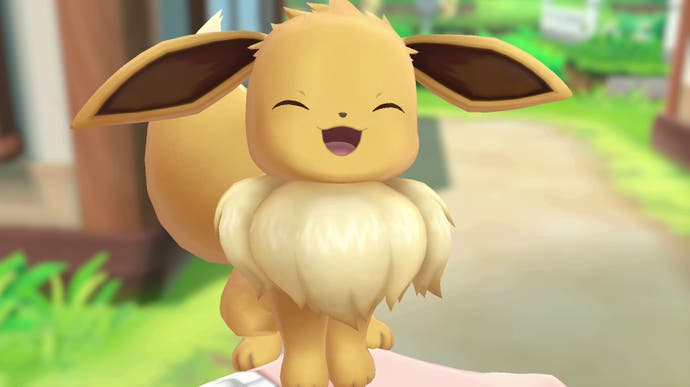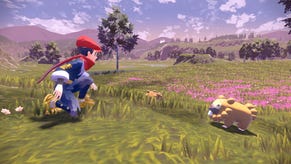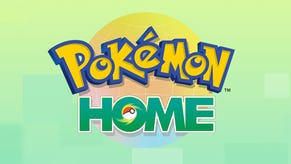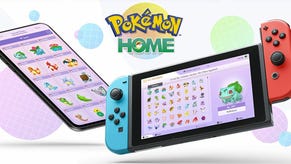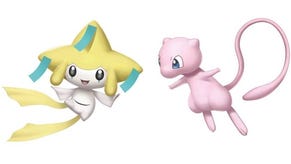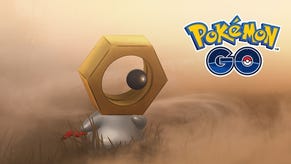The Switch's first Pok¨Śmon is for a new generation - but what's it got for the old?
Digging deep into the first two hours of Let's Go.
If only Kanto Airways had a loyalty scheme. I've been to Pokémon's founding region so many times, now. Red, Blue, and Yellow; back again, by wonderful surprise, in Gold, Silver, and Crystal; once more in the FireRed and LeafGreen remakes and of course all across the land in the TV series, if that counts. And then that's not to mention the perpetually-active Kanto events of Pokémon Go, if I ever missed it for just a second.
It says a lot, obviously, that eight visits in I'm still as content to be in the region as I ever have been - Kanto is so special a video game world - but after two hours (and a little bit) with Pokémon Let's Go I'm also still a tad unsure about my old haunt's new lick of paint.
My main concern, after that time with the game, is just the sheer speed at which I could get through it. I'm not an expert competitive player, and after Sun and Moon kindly built type-effectiveness straight into the battle menus I have to admit I'm even a little rusty on my matchups without a chart to hand - but even then, in those two-and-a-little-bit hours, I sailed through what felt like a sizeable chunk of the game by the standards of classic Red, Blue and Yellow.

Catching at least one of every Pokémon I encountered along the way, battling every trainer and collecting most items, I sailed through the game's opening crawl, out the other side of Viridian Forest and City and back again to Palette Town for that classic Professor Oak delivery mission. And then on, through Pewter City, Mt. Moon and two Gym battles - nice to see my old pals Brock and Misty - as well as a few stops to poke around in re-jigged corners and quickly peek at the entrance to Victory Road, just in case (it still works pretty much the same, for the record). I was playing faster than my usual press-A-on-every-rock stroll - in part because I wanted to see more than just the same tutorial that press and punters alike have already played inside out - but still, I've rushed faster.
To be blunt then, returning players looking for a challenge will not find it in the first two hours of Pokémon Let's Go. It's not even close to challenging for an adult player with a knowledge of the world or the game's two-decade-old systems. Gyms, for instance now require you to be over-prepared, asking you to have a favourable type-matchup in your squad, or Pokémon of a certain level, before you can even enter - conditions which I'd already met just by breezing through the game on both occasions. But then it's not at all supposed to be.
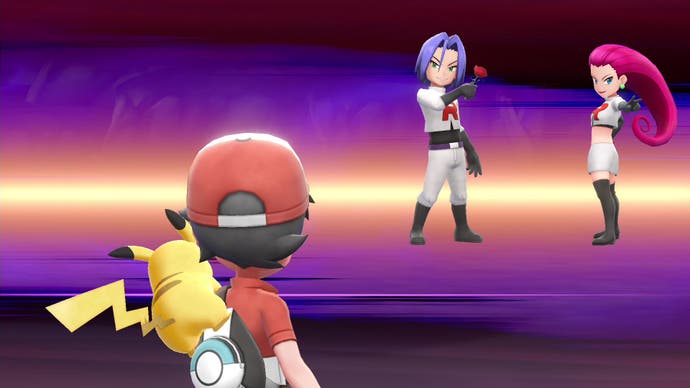
The first hour or two is always, naturally, the time Pokémon gives you its equivalent of a tutorial, gradually easing you into systems and concepts in relatively safe and undaunting environments. Even ignoring Let's Go's pitching to a younger audience this part of the game is supposed to be easy - trying to come down on any kind of verdict after such an early slice feels a bit like trying to critique a restaurant's food after nothing but an extended explanation of its menu. But there are some minutiae to pick at, and if a Pokémon nerd likes anything it's minutiae.
A big change - arguably an even bigger change than the well-documented removal of wild battles, at least for Pokémon's most serious players - is in how Effort Values (EVs, to those in the know) are handled. Previously, these were part of a hidden system designed to represent the effort you and your Pokémon had put into training. In practice, that usually meant grinding a specific patch of grass with a specific Pokémon, with specific items equipped, battling the same wild encounters ad nauseum and whipping out a notepad to jot down all 252 EVs that you need to add to a given stat along the way.
It's old-school RPG masochism, and the old EV system - and its devout following - undoubtedly leaned into it. But Let's Go's changes here are welcome, and smart. Instead of the old system, you now earn different types of candy from Pokémon caught in the wild. That candy breaks down into six categories, one for each stat - Speed, HP, Special Attack, etc. - and is just stored in you bag like anything else. You can use it when you want, on whatever Pokémon you want, much the same as the old Vitamin items that were previously hard to find (I'm sure there's something to be said about kids these days and replacing vitamins with candy, but I'll resist).
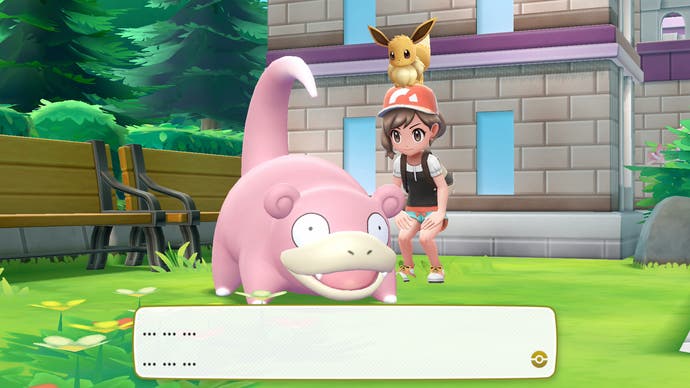
It's not clear yet how many wild Pokémon you're going to need to catch to reach the same point of competition readiness - but then, barring the intriguing Master Trainer endgame that director Junichi Masuda has mentioned, it's not clear how much of a competitive scene will even build around Let's Go. Competitive players may not even move on from the complexity and familiarity of generation seven's Ultra Sun and Ultra Moon at all.
Either way, wild battles, at least in my short time with Let's Go, are not missed. My fear was that their removal would oversimplify and streamline a game that already looked a little oversimplified and streamlined - but in fact the switch to visible, roaming Pokémon in the wilder parts of the game's overworld actually gives you something more to think about, rather than less. I also found myself naturally dodging and weaving between them as they appeared (some will run towards you, some will run away, and I hear others have special conditions - such as Abra, which will apparently teleport if it sees you coming), and my aversion to them is probably evidence in itself of the system working. I can now just run between Zubat in Mt. Moon, instead of facing them by the dozen.
It's a more intuitive way of doing things and also, probably, one that speaks to each generation's ever-shrinking tolerance for inefficiency in their tech. Let's Go, being aimed squarely at that new generation, brings a wave of improvements that, like the shift in catching wild Pokémon, seem revolutionary to us old-timers but are really the bare minimum needed to those new kids happy. In 2018 I don't want to leave the sofa to rent a film, and I let out a sigh every time I have to use more than six button presses to bring up the digital bus ticket on my app, so why should we expect kids to enjoy a high-tech fantasy world that asks them to schlep back to a public computer every time they want to use a different Pokémon, or fly across the world to change a nickname? (Yes, you heard correctly, as well as carrying all Pokémon in your bag, you can now also change a Pokémon's name whenever you want, without the permission of an old man you've never met. Brave new world indeed.)

The other worry regarding those wild battles - really the same worry I've already mentioned - was the pacing. Let's Go already feels fast, so without all the Zubat what's to stop me from gliding through those formerly sticky areas like Mt Moon, or worse, the late-game dungeons on Victory Road and beyond? Potentially, Game Freak has an answer. There's a new combo mechanic to catching wild Pokémon, whereby the more of the same Pokémon you catch in a row, the more Experience Points you get and also, the more chance you have of encountering a special, rare Pokémon in that area. I caught a Chansey in Mt Moon - and a Wigglytuff too, for the record, although with both having a roughly one percent spawn rate I'm inclined to think something may have been amiss in this demo build.
Still, with the old, slightly-barbaric-when-you-think-about-it Safari Zone replaced by the Pokémon Go-linked Go Park, there are now a number of rare Pokémon that need to be re-introduced to the wild, and so the combo system seems like an inventive way to balance all three problems in one: giving the displaced wildlife a home while also encouraging players to stay a little longer on each route, and likewise make the simple catch mechanics brought over from Go feel more engaging. I also just like the fact that super-rare Pokémon occasionally appearing in early-game routes also sprinkles a little welcome mystery back onto the game's most well-worn roads, like the playground rumours of Mew under a truck.
But those routes are still very well-worn, and I don't know how much Let's Go can change that - or, given it's intended audience, if it even needs to. Pokémon's worlds are puzzles - that's their secret. They're big, tangled knots that need you to follow the string from one end to the other, untangling and unravelling as you go. The joy is in the unravelling, and while I'm fairly certain that the new generation of players will be as enthralled by the mysteries and enigmas of Kanto as I was back when - and have been for so long since - it's going to take a little more for me to feel the same way about untying this same old knot the ninth time around.
